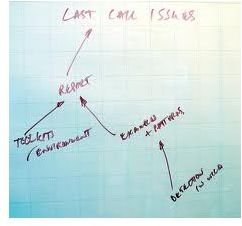A Comprehensive One-Stop Guide to PERT and CPM
Defining PERT and CPM?
The Project Evaluation and Review Technique (PERT) is a method of planning and scheduling interrelated tasks in a project. It takes the shape of a chart that depicts the various events and duration of the event, and dependencies or relationships among such events, within a project. Drawing up such a PERT chart allows the project manager to determine which events should precede which, and which events can take place parallel. This allows executing the project in the quickest time, optimizing time and resources.
The Critical Path Method (CPM) is the sequence of stages that determines the minimum time required to undertake an activity. The Critical path Method in project management is modeling the project to undertake the required tasks in the best manner. A collection of well-written articles makes these concepts clear:
- Project Estimation and Tracking Process
- Looking to Plan a Project? Try Out PERT
- Using a PERT Chart
- Five Things You Didn’t Know About the PERT Chart
- Working with the Critical Path
- Features of Critical Path Method
- CPM and Multiple Critical Paths
- Critical Path and PERT Networks - Similarities and Differences
How to Apply PERT

A PERT chart is a network diagram consisting of project events connected by arrows, tracing the relationships and interdependencies. It is prepared at the end of the project planning phase, and before preparing the work breakdown schedule or project timelines. The PERT formula uses this chart to calculate the probable project completion time considering the best case, middle-course, and worst case scenarios.
The popularity of PERT has led to the launch of many software programs that aid preparing PERT charts. These charts, however, can just as easily be created manually or using basic applications such as MS Excel.
- Introduction to the PERT Formula Series
- The PERT Formula and Its Benefits
- When Should You Use the PERT Formula?
- Disadvantages of the PERT Formula
- PERT Chart and Slack Time
- Using Excel for PERT Analysis
- Creating PERT Charts in Excel 2007
- What Is the Best Software for Working with the PERT Formula?
- Review of PERT Chart Expert
How to Apply Critical Path

The critical path is the sequence of project network activities which add up to the longest overall duration, for it determines the shortest time possible to complete the project. Determining the critical path requires using an algorithm that factors in a list of all activities related to the project, the duration of each activity, and dependencies between activities, to calculate the longest and the earliest paths of planned activities until project completion.
Like in the case with PERT, it is possible to calculate the critical path manually, but complex projects would require resourceful use of MS-Excel or similar applications, or any of the numerous software that aids the process.
- What is the Project Management Critical Chain and How is it Different than Critical Path?
- Critical Path Milestones
- Learn More About the Critical Path Timeline With These Helpful Examples
- Critical Path Examples of Using the Critical Path Method or the Critical Path Analysis
- Working with Critical Path Method Calculators
- The Pros and Cons of Free Critical Path Software
- Use Excel to Perform Critical Path Calculations
- Critical Path Analysis Tools in Excel
- Calculate the Float by Using the Critical Path Method (CPM)
PERT and CPM in Microsoft Project

Microsoft Project remains one of the most popular and established tools in project management. This software supports PERT and incorporates an easy to use PERT toolbar. To enable the PERT toolbar, simply go to View > Toolbars > PERT Analysis. Microsoft Project defines the critical path as a set of tasks that if delayed or started early influence the finish date of the project. It uses CPM internally to calculate the duration of projects.
This guide to PERT and CPM provides you with in-depth articles that shed light on how to make the best use of PERT and CPM in Microsoft Project. An understanding of these techniques allow project managers and executioners to optimize resources and improve productivity, contributing to both personal development and successful project execution.
- Project 2007 and the PERT Formula
- How to Create and Print a PERT Chart in Project 2007
- Estimating Task Durations Using the PERT Formula in Project 2007
- Applying Different PERT Weights in Project 2007
- Identifying and Viewing the Critical Path in Microsoft Project
- Cross-Project the Critical Path Across Various Projects in Project 2007
Have something to add to these topics? Searching for something else? Use the comments section at the end of each article to seek additional information, connect with authors or editors, or engage in a lively discussion on the topic with a vibrant community of subject enthusiasts.
References
-
Image Credits:
Project chart: freedigtalphotos.net/Sujin Jetkasettakorn under these terms of use
PERT: flickr.com/Wouter Kiel under CC 2.0 license
Critical Path: flickr.com/Paul Downey under CC 2.0 license
Microsoft Project: flickr.com/Marije, Peru eta Lili under CC 2.0 license
